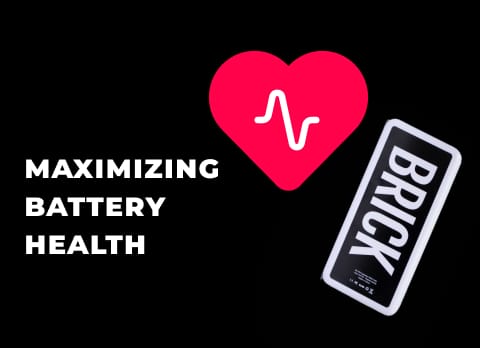Brick Startup Lingo: Your Guide to Success
Learn the concepts that are essential for success when building a powerbank sharing network in your market!

It’s time to get acquainted with some key terms and startup lingo specific to Brick! These are the concepts that are essential for success when building a powerbank sharing network in your market.
Business plan
A comprehensive business plan that covers your entire business strategy, from start to finish, will significantly enhance the strength of your market launch, saturation, and scalability.
For those looking at becoming a Market Operator, we want to be sure you're aware of the responsibilities that come with it. Drafting a business plan is an essential tool to ensure we’re on the same page regarding your approach to setting up a powerbank sharing network in your market.
B2B/B2C
Business-to-business and business-to-consumer. It describes the target audience a company serves. B2B sells products or services to other businesses, while B2C sells directly to consumers.
Brick operates as a B2B2C company, serving both partners and end-users. Our partners utilize our hardware and software solutions, managing their powerbank stations through the Brick Dashboard. Meanwhile, end-users use the Brick App to locate stations and rent powerbanks.
End-user
The audience a product or service is designed for. The most important (and obvious) goal is for the product or service to be useful to the user.
Consider the audience you aim to reach within your market. While powerbanks can be useful for a wide range of people, it’s important to identify the primary demographic that heavily relies on their smartphones. Where can you find this demographic frequently?
Entrepreneur
Someone who starts and manages a business venture, whether it’s a small side hustle or a large-scale business.
At Brick, we collaborate with those looking for passive income opportunities or aiming to create large-scale businesses. We support them by offering them an infrastructure to introduce powerbank sharing in their markets, to make it their own, and to set up a network of powerbank stations.
Expansion
It involves efforts to broaden reach, market share, or operations, to gain more prominence in industries. Successful expansion can lead to increased revenue, a stronger market presence, and greater overall success!
Get as many stations out at the most popular places as soon as possible! A well-placed station, along with onboarded staff, will ensure more usage and promote the service better than any marketing campaign
Key Performance Indicators
Key Performance Indicators (KPIs) are quantifiable and measurable metrics that are used to track progress toward a goal or objective.
Think of them as cheat codes to become successful. The KPIs used at Brick are available on our Brick Dashboard that partners have access to. They’re there to provide the partners with data for them to play around with their business strategy.
Low hanging fruit
Challenges or problems that are relatively simple to address, such as easy sales or achievable goals. It can be used as a strategic approach when there’s a need to meet immediate targets, while also pursuing more complex objectives, aka the ‘higher-hanging fruit’.
Start with ‘obvious’ venues for your powerbank stations as a starting point. Think about places where people tend to spend a significant amount of time. Like bars, for instance. Once you’ve completed your initial sales round and have more than ten stations deployed, you’ll start building brand awareness, This will assist you in pursuing larger venues!
Market research
Doing your research is important! It involves the collection and analysis of data related to your target market. This includes gathering data on customer preferences, requirements, and competitive factors. Don’t forget to consider the cultural aspects of your markets, they can identify pain points and opportunities before launching!
Those who have done research before entering their market tend to achieve higher rates of success compared to those who haven’t. This research also benefits Brick HQ as it helps us to understand what needs to be done to ensure a successful launch.
Marketing
A strategic approach that can generate enthusiasm and interest in a product or service. It can operate through two avenues: inbound, which draws customers to your product, and outbound marketing, which involves actively reaching out to potential customers.
Powerbank sharing doesn’t require extensive marketing efforts, but strategically placing your stations serves as an effective form of marketing in itself. The stations speak for your product, piquing people’s curiosity and interest. While they may not immediately require the service, it leaves a lasting impression in their minds - becoming a solution when the need arises!
Milestones
Specific outcomes or goals you aim to achieve as part of your strategy to take your business to the next level.
Market Operators at Brick have milestones to ensure their network growth. Network Partners have flexibility without milestones but can set them for themselves if they have a growth trajectory in mind.
Pitch
A brief and impactful presentation to convey your business idea, goals, and value proposition to interested parties. A pitch should be tailored to the specific audience you’re addressing.
When it comes to pitching powerbank stations to venues, the core message about the benefits of powerbank stations may remain the same. However, your success hinges on how you communicate that message. If you aim to secure placements in prime venues, don’t shy away from being creative, bold, and even a bit cheeky in your approach.
Return on investment
Let’s be real, it’s the first thing that comes to mind when thinking about making a venture. It’s the financial gain you can expect to receive with the money you invest.
The return on investment for Brick partners depends on the strategic placement of powerbank stations. It’s fairly straightforward: if the stations aren’t deployed, you will not make money. The effort put into station placement directly correlates to the potential for higher earnings.
Revenue
The income generated from actual sales. It’s not the same as profit or capital. Profit is the money that remains after deducting expenses from revenue. Capital refers to the initial funds or investments used to start a business.
Your revenue as a Brick partner ties to your partnership type and amount of stations. A network partner with 20 stations adopts a more passive income strategy, while a market owner with 100 stations can expect to generate a higher revenue due to their larger presence in the market.
Scalability
The ability to grow and sustainably expand business operations. The goal is to offer services to an expanding user base while maintaining an efficient business model.
Brick partners who invest their time and effort in maintaining their stations can leverage the growing brand awareness to their advantage, driving both station requests and expanding user base.
Launch your network
While establishing such a network requires a dedication of investment and resources, it holds the promise of significant returns. Start building a successful powerbank sharing network in your market!




